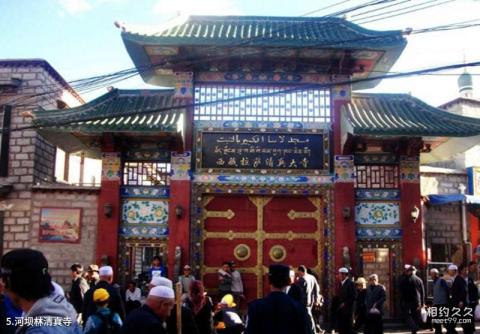
Introduction to Heba Lin Mosque: The largest mosque in Lhasa, also known as the Grand Mosque, is located in the southeast of Lhasa City. It was built in the 55th year of Emperor Kangxi of the Qing Dynasty (1716). It was initially small in scale, with a construction area of more than 200 square meters. It was repaired and expanded in the fifty-eighth year of Qianlong (1793). In 1959, a rebellion broke out in Tibet and the Great Mosque was destroyed. Funds were raised to rebuild it the following year. The total area of the Grand Mosque is about 2,600 square meters, with a construction area of about 1,300 square meters. The entire courtyard is long from east to west and short from north to south, and the layout is irregular. It mainly consists of the gate, front yard, dormitory, minaret, chapel and bathroom. The north-facing gate has a wooden archway-style structure, with a gold banner reading "mosque" on it, and is decorated with paintings and carvings. Inside the gate is a courtyard with an area of 380 square meters. A large plaque is hung on the door of the west entrance corridor, with the inscription "The Great Religion Will Live Forever" written on the forehead.
